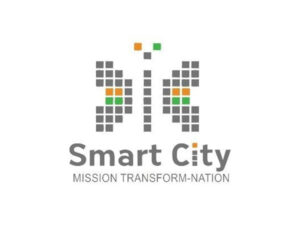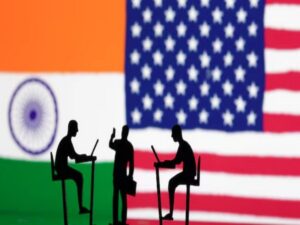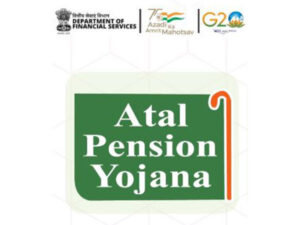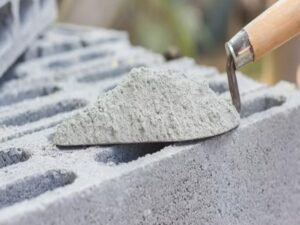Speaker of Lok Sabha & Law Minister Inaugurate India’s First Constitution Museum to Commemorate 75th Anniversary of the Adoption of the Indian Constitution
OP Jindal University
Sonipat (Haryana) [India], November 23: The Speaker of Lok Sabha, Om Birla and Minister of State for Law and Justice, Arjun Ram Meghwal today inaugurated India’s First Constitution Museum at O.P. Jindal Global University (JGU), Sonipat. On this august occasion they were joined by Naveen Jindal, the Founding Chancellor of JGU and Member of Parliament (Lok Sabha) and other distinguished guests.
The Chief Guest, Speaker of Lok Sabha, Om Birla, said, “India’s first Constitution Museum at O.P. Jindal Global University marks a historic milestone which will acquaint future generations with our Constitution, illuminating its history, inception, and the immense efforts behind its creation. In 2015, Prime Minister Narendra Modi called for the celebration of Constitution Day, highlighting the visionary ideas that shaped our Constitution. He urged us to remember and honour the contributions of those who worked tirelessly to frame this foundational document. Our Constitution stands as a beacon guiding India and the world. Our Constitution enshrines the principles of equality for all. More than a legal framework, our constitution is a transformative document that has brought profound social, economic, and political change. It is not merely a set of laws but a guiding philosophy, that continues to lead us towards a more just and inclusive society. Our democracy has united diverse cultures, languages, and traditions, exemplifying the spirit of “Vasudhaiva Kutumbakam”–the world is one family–throughout its 75-year journey. Under the leadership of Prime Minister Modi, we continue to advance this legacy.”
The Guest of Honour, the Minister of State for Law and Justice, Arjun Ram Meghwal, said, “Equality, liberty and fraternity are the cornerstones of our Constitution. We place equality before liberty as it is more important. We will only remain independent, said Dr B.R. Ambedkar, only when we have equality. I especially laud the effort undertaken by Chancellor Naveen Jindal efforts to ensure that citizens would be free to fly the National Flag respectfully and with dignity and honour. The Constitution Museum is a true memorial to the significant contribution of Dr. B.R. Ambedkar, the main framer of the Indian Constitution and I sincerely hope that it is visited by the current legislators of India to get a modern and digital insight into the making of the Constitution.
The Constitution Academy & the Rights and Freedoms Museum, a Jindal Global University initiative, is an attempt to delve into the cornerstone of India’s democracy and the fundamental rights and freedoms enshrined within it.
The Chancellor of O.P. Jindal Global University Naveen Jindal, M.P. Lok Sabha said, “Constitutionalism is a philosophy that restricts government power and ensures the protection of individual rights. Constitutionalism is a political theory that emphasizes that limitation of governmental power, regardless of its source of proper procedures. It asserts that there are certain actions a government just cannot undertake, even if they are supported by public opinion or proper procedures. The Constitution Museum is a reminder of the vision of our Founding Fathers. It is the longest written constitution in the world, which came into being because of the painstaking efforts and toil of the constituent assembly. It was crafted with immense foresight with an aim of balancing individual rights and the state powers the resolve to secure to all its citizens, justice, liberty, equality and promote fraternity, to assure the dignity of the individual enshrined in the preamble of the Constitution. The Constitution Musuem at O.P. Jindal Global University is a reminder to celebrate the constitution of the world’s largest democracy, and to promote the idea of an Indian constitutionalism as we commemorate the 75th anniversary of the adoption of the Constitution of India on November 26 this year.”
Professor (Dr.) C. Raj Kumar, the Founding Vice Chancellor of O.P. Jindal Global University thanked the distinguished guests on this momentous occasion and said, “As part of the celebrations, we are also hosting the National Convention on the Constitution of India from 23rd to 25th November. This convention will have distinguished speakers representing the law and public life, including three former Chief Justices, seven judges of the Supreme Court of India, three former judges of the Supreme Court, 20 plus senior advocates of the Supreme Court of India, eight distinguished parliamentarians and different political parties, besides the attorney general for India, the solicitor of India, and several other scholars from India and abroad, it is indeed my distinct honour to extend a warm welcome to our distinguished guests and we are deeply grateful to them for taking the time for inaugurating India’s first constitution Museum. I would also like to extend my gratitude to our benefactor and Founding Chancellor Mr Naveen Jindal MP, Lok Sabha who brought to fruition the vision of a global university in India and has achieved historic recognition through his work in bringing the pride of flying the Indian National Flag for every citizen.”
ABOUT THE MUSEUM
The museum is designed to provide a deep and engaging exploration of the Constitution’s essential elements and key provisions that every citizen should know. The aim is to make the Constitution both accessible and relevant, demonstrating how its values and ideals have shaped the nation.
The visitor can Immerse themselves in the sights and sounds of pre-independence India, through 360-degree visual spectacle. Through cutting-edge technology and multimedia storytelling, our exhibit unfolds the chronological tapestry of events leading to the drafting of the Indian Constitution. The collaboration between the O.P. Jindal Global University and IIT Madras will bring to life an unprecedented experience through a tour guide robot called S.A.M.V.I.D. to commemorate the most significant document that defines India as a Republic.
On display in the museum’s centre is one of the 1000 photolithographic reproductions of Constitution of India. The original, an elaborately crafted edition taking nearly five years to complete, bears the signatures of the nation’s founders–the framers of the Constitution. Prem Behari Narain Raizada rendered the calligraphy, while Nandalal Bose and other artists illustrated the text. The manuscript was published in Dehradun and photolithographed by the Survey of India.
The Museum especially highlights the contribution of women members of the Constituent Assembly and there are animations about the life of each female member of the Constituent Assembly focusing on their contribution to the Constitution as well as the making of Independent India.
To commemorate the memory of nearly 300 members of the Constituent Assembly, sculptured busts of each member has been placed in niches to recognise their contribution. The gallery also explores the global inspirations and historical frameworks that influenced the creation of India’s Constitution, highlighting how these ideas were reimagined and adapted to suit the unique needs and aspirations of India’s diverse populace.
The mezzanine also holds a hologram exhibit of Dr B. R. Ambedkar. This installation brings his words and vision to life, allowing visitors to experience his legacy first-hand. The answers have been crafted based on his speeches and writings.
The art featured in the museum is anticipated to be a major attraction.
Rajesh P. Subramanian’s sculpture, ‘We, The People of India’, embodies “unity in diversity,” a core constitutional principle. In ‘Echoes of Liberty’, Rahul Gautam creates a mural that fuses elements from constitutional manuscripts with modern design. Harsha Durugadda’s ‘Triad of Unity’ links themes of unity, justice, and sovereignty. Nishant S. Kumbhatil’s ‘Insaaf Ki Devi’ portrays lady justice holding a balance, a powerful emblem of impartiality in Indian law. Pradeep B. Jogdand’s ‘Equality Before Law’ symbolises equality and justice. Deval Verma’s large-scale ‘Map of challenges viewers to reconsider notions of value and beauty. K. R. Nariman’s ‘Freedom’ celebrates “We, the People” who uphold constitutional values in daily lives as citizens. Finally, Rahul Gautam’s sculpture ‘Founding Mothers’ artistically represents an imagined photograph featuring the 15 women members of the Constituent Assembly, honouring their contributions to shaping India’s constitutional framework.
Anjchita B. Nair, CEO, Culture and Head, Centre for Museums has curated the museum emphasising on how the Constitution Museum steers away from the typical unidirectional tone taken by conventional museums and instead uses a multitude of formats for innovative storytelling.






